Episodes

Monday Dec 16, 2019
Episode 357 - Microbiology vs Macro climate challenges
Monday Dec 16, 2019
Monday Dec 16, 2019
Scientist are turning to microbiology to fight global climate challenges. How do you change a microbe from consumer to producer? Can you teach old e-coli new tricks, and make it consume CO2? How can a gut bacteria start to behave like a plant? Can we use enzymes to produce Hydrogen gas efficiently? What is the missing step in hydrogen fuel cell production? Can synthesised enzyme engines help us produce hydrogen without complex processes?
References:
- Gleizer et al. Conversion of Escherichia coli to Generate All Biomass Carbon from CO2. Cell, 2019 DOI: 10.1016/j.cell.2019.11.009
- The binuclear cluster of [FeFe] hydrogenase is formed with sulfur donated by cysteine of an [Fe(Cys)(CO)2(CN)] organometallic precursor. Proceedings of the National Academy of Sciences, 2019; 116 (42): 20850 DOI: 10.1073/pnas.1913324116

Monday Dec 09, 2019
Episode 356 - Responding to signs of danger
Monday Dec 09, 2019
Monday Dec 09, 2019
How do animals communicate information about danger? When a threat is detected by one animal, how do they pass it along to others? Does empathy play a role in how a create responds to a threat? Does the reaction of others around you change your response to threats? What chemical causes you to freeze in response to danger? How does serotonin cause deer in the headlights moments? What's the link between serotonin and slowing down in response to danger?
- Yingying Han, Rune Bruls, Efe Soyman, Rajat Mani Thomas, Vasiliki Pentaraki, Naomi Jelinek, Mirjam Heinemans, Iege Bassez, Sam Verschooren, Illanah Pruis, Thijs Van Lierde, Nathaly Carrillo, Valeria Gazzola, Maria Carrillo, Christian Keysers. Bidirectional cingulate-dependent danger information transfer across rats. PLOS Biology, 2019; 17 (12): e3000524 DOI: 10.1371/journal.pbio.3000524
- Clare E. Howard, Chin-Lin Chen, Tanya Tabachnik, Rick Hormigo, Pavan Ramdya, Richard S. Mann. Serotonergic Modulation of Walking in Drosophila. Current Biology, 2019; DOI: 10.1016/j.cub.2019.10.042
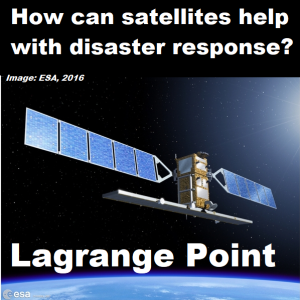
Monday Dec 02, 2019
Episode 355 - Satellites keeping us safe on the ground
Monday Dec 02, 2019
Monday Dec 02, 2019
Satellites can help save lives down on earth, by helping us better respond in disasters. When a flood, tsunami or other disaster strikes, satellites can help emergency responders get where they need to be as fast as possible. Satellites can track floods in near real time and help shave minutes of disaster response times. Finding your way in a flood or fire can be tricky, but satellites can help direct emergency responders. Satellites can help track critical infrastructure like bridges or roads as they age. When a bridge fails it can be a tragedy, but satellites can help give an early warning. When we dig big tunnels we can disturb structures and buildings, so how can we use satellites to avoid a disaster.
References:
- Perry C. Oddo, John D. Bolten. The Value of Near Real-Time Earth Observations for Improved Flood Disaster Response. Frontiers in Environmental Science, 2019; 7 DOI: 10.3389/fenvs.2019.00127
- Pietro Milillo, Giorgia Giardina, Daniele Perissin, Giovanni Milillo, Alessandro Coletta, Carlo Terranova. Pre-Collapse Space Geodetic Observations of Critical Infrastructure: The Morandi Bridge, Genoa, Italy. Remote Sensing, 2019; 11 (12): 1403 DOI: 10.3390/rs11121403

Monday Nov 25, 2019
Episode 354 - Safer pacemakers and mini machines inside our cells
Monday Nov 25, 2019
Monday Nov 25, 2019
Our bodies are filled with molecular and cellular machines, pumping, spinning and moving. How do tiny single molecules pump sodium ions across a cell? What is the connection between a single molecule pump and cells producing electricity? How can a single molecule pump be more efficient than our modern ones? How do we make pacemakers safer? Overtime a pacemaker grows to become part of the heart fibre. How do we make pacemakers less likely to be overgrown and easier to replace?
References:
- Tatsuya Iida, Yoshihiro Minagawa, Hiroshi Ueno, Fumihiro Kawai, Takeshi Murata, Ryota Iino. Single-molecule analysis reveals rotational substeps and chemo-mechanical coupling scheme of Enterococcus hirae V1-ATPase. Journal of Biological Chemistry, 2019; 294 (45): 17017 DOI: 10.1074/jbc.RA119.008947
- Francesco Robotti, Ita Sterner, Simone Bottan, Josep M. Monné Rodríguez, Giovanni Pellegrini, Tanja Schmidt, Volkmar Falk, Dimos Poulikakos, Aldo Ferrari, Christoph Starck. Microengineered biosynthesized cellulose as anti-fibrotic in vivo protection for cardiac implantable electronic devices. Biomaterials, 2020; 229: 119583 DOI: 10.1016/j.biomaterials.2019.119583

Monday Nov 18, 2019
Monday Nov 18, 2019
Plants play an important role in our environment, yet there is still so much more to understand. We often think of nature as a zero sum game, but older and younger plants can collaborate. When surviving in a harsh environment, the best results occur when old and young plants grow together. Photosynthesis seems simple, but understanding the intricacies of the mechanisms can help us boost crop yields. Regulating the amount of photosynthesis can help plants survive or thrive in changing climates. How do boreal forests help capture nitrogen from the air? What does an odd metal have to do with forests in Canada storing nitrogen?
- Alicia Montesinos-Navarro, Isabelle Storer, Rocío Perez-Barrales. Benefits for nurse and facilitated plants emerge when interactions are considered along the entire life-span. Perspectives in Plant Ecology, Evolution and Systematics, 2019; 41: 125483 DOI: 10.1016/j.ppees.2019.125483
- Lorna A. Malone, Pu Qian, Guy E. Mayneord, Andrew Hitchcock, David A. Farmer, Rebecca F. Thompson, David J. K. Swainsbury, Neil A. Ranson, C. Neil Hunter, Matthew P. Johnson. Cryo-EM structure of the spinach cytochrome b6 f complex at 3.6 Å resolution. Nature, 2019; DOI: 10.1038/s41586-019-1746-6
- Princeton University. (2019, November 11). Nature's backup plan for converting nitrogen into plant nutrients. ScienceDaily. Retrieved November 15, 2019 from www.sciencedaily.com/releases/2019/11/191111180100.htm
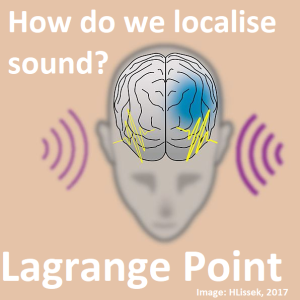
Monday Nov 11, 2019
Episode 352 - Figuring out where sound comes from and perceiving pitch
Monday Nov 11, 2019
Monday Nov 11, 2019
This week we look at the way our brains process sound, music, pitch and rhythm. How does our brain figure out where a sound is coming from? Do our eyes and ears process distance and location in a similar way? How does our brain discern differences in stimuli? What can we learn about pitch and rhythm from studying a remote Bolivian tribe? Is there a biological limit to our perception of sounds? Is our ability to perceive rhythm, chords and pitch cultural or biological?
References:
- Antje Ihlefeld, Nima Alamatsaz, Robert M Shapley. Population rate-coding predicts correctly that human sound localization depends on sound intensity. eLife, 2019; 8 DOI: 10.7554/eLife.47027
- Nori Jacoby, Eduardo A. Undurraga, Malinda J. McPherson, Joaquín Valdés, Tomás Ossandón, Josh H. McDermott. Universal and Non-universal Features of Musical Pitch Perception Revealed by Singing. Current Biology, 2019; DOI: 10.1016/j.cub.2019.08.020
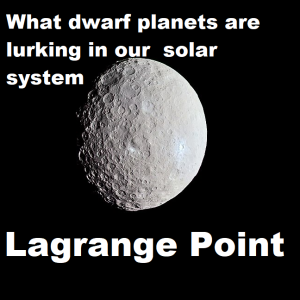
Monday Nov 04, 2019
Episode 351 - A new dwarf planet and what makes an exoplanet habitable
Monday Nov 04, 2019
Monday Nov 04, 2019
What makes a dwarf planet not a planet? What are the rules governing the word planet? Just how many dwarf planets are out there in our solar system? How can we use telescopes and modelling to add or subtract a dwarf planet from that list? We've talked about Goldilocks zone exoplanets, but what about their ability to withstand space weather? What role does a star's magnetic field play in protecting a planet from damaging radiation? Does space weather need to be added to the exoplanet Goldilocks zone?
References:
- P. Vernazza, L. Jorda, P. Ševeček, M. Brož, M. Viikinkoski, J. Hanuš, B. Carry, A. Drouard, M. Ferrais, M. Marsset, F. Marchis, M. Birlan, E. Podlewska-Gaca, E. Jehin, P. Bartczak, G. Dudzinski, J. Berthier, J. Castillo-Rogez, F. Cipriani, F. Colas, F. DeMeo, C. Dumas, J. Durech, R. Fetick, T. Fusco, J. Grice, M. Kaasalainen, A. Kryszczynska, P. Lamy, H. Le Coroller, A. Marciniak, T. Michalowski, P. Michel, N. Rambaux, T. Santana-Ros, P. Tanga, F. Vachier, A. Vigan, O. Witasse, B. Yang, M. Gillon, Z. Benkhaldoun, R. Szakats, R. Hirsch, R. Duffard, A. Chapman, J. L. Maestre. A basin-free spherical shape as an outcome of a giant impact on asteroid Hygiea. Nature Astronomy, 2019; DOI: 10.1038/s41550-019-0915-8
- Alison O. Farrish, David Alexander, Mei Maruo, Marc DeRosa, Frank Toffoletto, Anthony M. Sciola. Characterizing the Magnetic Environment of Exoplanet Stellar Systems. The Astrophysical Journal, 2019; 885 (1): 51 DOI: 10.3847/1538-4357/ab4652

Monday Oct 28, 2019
Episode 350 - Developing, tracking, recycling new materials
Monday Oct 28, 2019
Monday Oct 28, 2019
Smart phones, computers, televisions and even children's toys are part of what makes our modern world so exciting. But these often rely on plastics and rare earth metals which are hard to recycle. Are there efficient ways to capture all those rare earth metals? How are rare earth metals in old phones recycled today, and can we make it better? Knowing which bin to put plastic in is difficult, so what if there was a more universal way to recycle plastics? How does turning plastic into a gas with the help of steam help create a circular plastic economy? How can some steam power help crack plastics back into their most basic forms? Is it possible to recycle plastics without to build whole new plastic refineries? Regulation is often playing catch up to making materials safe. Are the latest generation of 'safe' fire retardants any safer than those that came before?
References:
Robert F. Higgins, Thibault Cheisson, Bren E. Cole, Brian C. Manor, Patrick J. Carroll, Eric J Schelter. Magnetic Field Directed Rare-Earth Separations. Angewandte Chemie International Edition, 2019; DOI: 10.1002/anie.201911606
Arlene Blum, Mamta Behl, Linda S. Birnbaum, Miriam L. Diamond, Allison Phillips, Veena Singla, Nisha S. Sipes, Heather M. Stapleton, Marta Venier. Organophosphate Ester Flame Retardants: Are They a Regrettable Substitution for Polybrominated Diphenyl Ethers? Environmental Science & Technology Letters, 2019; DOI: 10.1021/acs.estlett.9b00582
Henrik Thunman, Teresa Berdugo Vilches, Martin Seemann, Jelena Maric, Isabel Cañete Vela, Sébastien Pissot, Huong N.T. Nguyen. Circular use of plastics-transformation of existing petrochemical clusters into thermochemical recycling plants with 100% plastics recovery. Sustainable Materials and Technologies, 2019; 22: e00124 DOI: 10.1016/j.susmat.2019.e00124
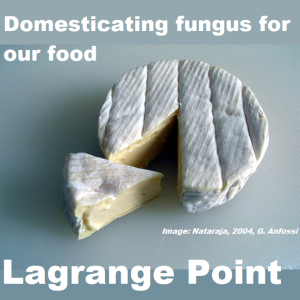
Monday Oct 21, 2019
Episode 349 - Domesticating fungus for our food
Monday Oct 21, 2019
Monday Oct 21, 2019
Humans have been using micro-organisms like fungus and bacteria to help improve our food for millennia. Can we tame new wild species of fungus to help create new types of our favourite foods like cheese? Penicillin is mostly known for antibiotics but it also helps give Camembert its particular taste. What causes cheese to rapidly tame wild strains of fungus? We are not the only ones who use microbes to help our food. Ants help stop disease from destroying plants by spreading their own antibiotics. Ant base antibiotics help stop plant pathogens. Sometimes bacteria don't fight against each other but rather team up and work together. Survival of kindest rules for bacteria, which helps different strains work together to survive.
References:
- Bodinaku, I., Shaffer, J., Connors, A. B., Steenwyk, J. L., Biango-Daniels, M. N., Kastman, E. K., … Wolfe, B. E. (2019). Rapid Phenotypic and Metabolomic Domestication of Wild Penicillium Molds on Cheese. MBio, 10(5). doi: 10.1128/mbio.02445-19
- Joachim Offenberg, Christian Damgaard. Ants suppressing plant pathogens: a review. Oikos, 2019; DOI: 10.1111/oik.06744
- Wenzheng Liu, Samuel Jacquiod, Asker Brejnrod, Jakob Russel, Mette Burmølle, Søren J. Sørensen. Deciphering links between bacterial interactions and spatial organization in multispecies biofilms. The ISME Journal, 2019; DOI: 10.1038/s41396-019-0494-9
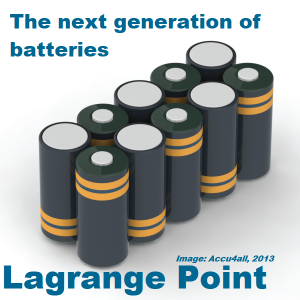
Monday Oct 14, 2019
Episode 348 - More efficient Lithium-Ion batteries and Organic Batteries
Monday Oct 14, 2019
Monday Oct 14, 2019
We launch from the Nobel Prize for Chemistry 2019 into current battery research and development. Creating the ubiquitous Lithium Ion battery took decades of collaborative research across the globe. How are scientists working together today to make the new generation of batteries? Can we improve LI batteries with new electrolyte mixes? How can we use Silicon instead of graphite in our batteries to give them a boost? Is it possible to make an organic recyclable battery? How can we use proteins and peptides to make organic batteries? Can we make batteries without damaging the environment?
References:
- Nobel Foundation. (2019, October 9). Nobel Prize in Chemistry 2019: Lithium-ion batteries. ScienceDaily. Retrieved October 11, 2019 from www.sciencedaily.com/releases/2019/10/191009082508.htm
- Binghong Han, Chen Liao, Fulya Dogan, Stephen E. Trask, Saul H. Lapidus, John T. Vaughey, Baris Key. Using Mixed Salt Electrolytes to Stabilize Silicon Anodes for Lithium-Ion Batteries via in Situ Formation of Li–M–Si Ternaries (M = Mg, Zn, Al, Ca). ACS Applied Materials & Interfaces, 2019; 11 (33): 29780 DOI: 10.1021/acsami.9b07270
- American Chemical Society. (2019, August 26). Producing protein batteries for safer, environmentally friendly power storage. ScienceDaily. Retrieved October 12, 2019 from www.sciencedaily.com/releases/2019/08/190826092322.htm5

Monday Oct 07, 2019
Episode 347 - Capturing carbon with better farms and forests
Monday Oct 07, 2019
Monday Oct 07, 2019
Capturing carbon is important for helping offset CO2 emissions and tackling climate changes. Farming has an important role to play in improving CO2 sequestration with the use of cover crops and compost. Forests are important carbon sinks too, but they are at risk releasing a lot of the trapped carbon if care is not taken to stop invasive species. Plus fertilisers have helped feed the planet but can leech out nitrogen into the environment, so how do we better manage and improve the nitrogen cycle.
- Nicole E. Tautges, Jessica L. Chiartas, Amélie C. M. Gaudin, Anthony T. O'Geen, Israel Herrera, Kate M. Scow. Deep soil inventories reveal that impacts of cover crops and compost on soil carbon sequestration differ in surface and subsurface soils. Global Change Biology, 2019; DOI: 10.1111/gcb.14762
- Songlin Fei, Randall S. Morin, Christopher M. Oswalt, Andrew M. Liebhold. Biomass losses resulting from insect and disease invasions in US forests. Proceedings of the National Academy of Sciences, 2019; 201820601 DOI: 10.1073/pnas.1820601116
- Benjamin Z. Houlton, Maya Almaraz, Viney Aneja, Amy T. Austin, Edith Bai, Kenneth G. Cassman, Jana E. Compton, Eric A. Davidson, Jan Willem Erisman, James N. Galloway, Baojing Gu, Guolin Yao, Luiz A. Martinelli, Kate Scow, William H. Schlesinger, Thomas P. Tomich, Chao Wang, Xin Zhang. A World of Cobenefits: Solving the Global Nitrogen Challenge. Earth's Future, 2019; DOI: 10.1029/2019EF001222

Monday Sep 30, 2019
Monday Sep 30, 2019
Washing machines can save a lot of time and help clean up mess, but they can also harm our health and environment. Which washing process is better for the environment - full an fast or empty and delicate? How do washing machines help fill our oceans with microplastics? What can be done to help stop washing machines contributing to the microplastics in our waterways? Which washing setting is best for your health? Cold and clean or warm and soapy? How did a normal washing machine cause havoc in a hospital? How can you multi-drug resistant pathogens spread through a washing machine?
References:
- American Society for Microbiology. (2019, September 27). Your energy-efficient washing machine could be harboring pathogens: Lower temperatures used in 'energy saver' washing machines may not be killing all pathogens. ScienceDaily. Retrieved September 29, 2019 from www.sciencedaily.com/releases/2019/09/190927135202.htm
- Max R. Kelly, Neil J. Lant, Martyn Kurr, J. Grant Burgess. Importance of Water-Volume on the Release of Microplastic Fibers from Laundry. Environmental Science & Technology, 2019; DOI: 10.1021/acs.est.9b03022

Monday Sep 23, 2019
Monday Sep 23, 2019
Is it possible to stop Alzheimer's in it's tracks? How does the formation of plaques on your brain cells lead to Alzheimer's. Does the your brain immune cells fighting back against plaques lead to Alzheimers? Amino acids in the brain tying themselves into knots, can lead to super strong sealed zippers forming which dry out proteins, damage neurons and eventually can lead to diseases like Alzheimer's. An enzyme missing a repair or two over 60 years can lead to build up of kinked amino acids chains which can lead to neuron-degenerative diseases. What causes a cell to eat itself? Well its actually a pretty healthy thing to do. If a brain cell doesn't eat itself at the right time, well it can lead to a whole bunch of diseases.
- Rebeccah A. Warmack, David R. Boyer, Chih-Te Zee, Logan S. Richards, Michael R. Sawaya, Duilio Cascio, Tamir Gonen, David S. Eisenberg, Steven G. Clarke. Structure of amyloid-β (20-34) with Alzheimer’s-associated isomerization at Asp23 reveals a distinct protofilament interface. Nature Communications, 2019; 10 (1) DOI: 10.1038/s41467-019-11183-z
- Elizabeth Spangenberg, Paul L. Severson, Lindsay A. Hohsfield, Joshua Crapser, Jiazhong Zhang, Elizabeth A. Burton, Ying Zhang, Wayne Spevak, Jack Lin, Nicole Y. Phan, Gaston Habets, Andrey Rymar, Garson Tsang, Jason Walters, Marika Nespi, Parmveer Singh, Stephanie Broome, Prabha Ibrahim, Chao Zhang, Gideon Bollag, Brian L. West, Kim N. Green. Sustained microglial depletion with CSF1R inhibitor impairs parenchymal plaque development in an Alzheimer’s disease model. Nature Communications, 2019; 10 (1) DOI: 10.1038/s41467-019-11674-z
- Yi Yang, Thea L. Willis, Robert W. Button, Conor J. Strang, Yuhua Fu, Xue Wen, Portia R. C. Grayson, Tracey Evans, Rebecca J. Sipthorpe, Sheridan L. Roberts, Bing Hu, Jianke Zhang, Boxun Lu, Shouqing Luo. Cytoplasmic DAXX drives SQSTM1/p62 phase condensation to activate Nrf2-mediated stress response. Nature Communications, 2019; 10 (1) DOI: 10.1038/s41467-019-11671-2

Monday Sep 16, 2019
Monday Sep 16, 2019
We look at galactic events, where galaxies collide, stars form and emptiness of space. Space is so unfathomably huge, but its still possible for galaxies to collide. The Milky Way was formed through one of this violent collisions over 10 billion years ago. Space seems empty but there are sections of space that are emptier than others, the great Local Void around the Local group. Stars forming in galaxies rely on gas clouds, but what does it take to form a star? What do you need to really make a good nursery for stars?
- R. Brent Tully, Daniel Pomarède, Romain Graziani, Hélène M. Courtois, Yehuda Hoffman, Edward J. Shaya. Cosmicflows-3: Cosmography of the Local Void. The Astrophysical Journal, 2019; 880 (1): 24 DOI: 10.3847/1538-4357/ab2597
- Kazufumi Torii, Shinji Fujita, Atsushi Nishimura, Kazuki Tokuda, Mikito Kohno, Kengo Tachihara, Shu-ichiro Inutsuka, Mitsuhiro Matsuo, Mika Kuriki, Yuya Tsuda, Tetsuhiro Minamidani, Tomofumi Umemoto, Nario Kuno, Yusuke Miyamoto. FOREST Unbiased Galactic plane Imaging survey with the Nobeyama 45 m telescope (FUGIN). V. Dense gas mass fraction of molecular gas in the Galactic plane. Publications of the Astronomical Society of Japan, 2019; DOI: 10.1093/pasj/psz033
- Carme Gallart, Edouard J. Bernard, Chris B. Brook, Tomás Ruiz-Lara, Santi Cassisi, Vanessa Hill, Matteo Monelli. Uncovering the birth of the Milky Way through accurate stellar ages with Gaia. Nature Astronomy, 2019; DOI: 10.1038/s41550-019-0829-5

Monday Sep 09, 2019
Monday Sep 09, 2019
Growing enough food to feed the planet is a challenge that will only get harder as the climate changes. So how do farmers and scientists work together to make crops more sustainable, more resilient to disease, and use less herbicides? With genetic engineering, one of the worlds most important crops, rice, can be made even tougher. Using a two type bait gene, rice can be engineered to fight off fungus like rice blast. If you have to spray with herbicides, when should you do it? Well you need to pay attention to the circadian rhythm of the plants.
- Freya A Varden, Hiromasa Saitoh, Kae Yoshino, Marina Franceschetti, Sophien Kamoun, Ryohei Terauchi, Mark J. Banfield. Cross-reactivity of a rice NLR immune receptor to distinct effectors from the rice blast pathogen Magnaporthe oryzae provides partial disease resistance. Journal of Biological Chemistry, 2019; jbc.RA119.007730 DOI: 10.1074/jbc.RA119.007730
- Fiona E. Belbin, Gavin J. Hall, Amelia B. Jackson, Florence E. Schanschieff, George Archibald, Carl Formstone, Antony N. Dodd. Plant circadian rhythms regulate the effectiveness of a glyphosate-based herbicide. Nature Communications, 2019; 10 (1) DOI: 10.1038/s41467-019-11709-5

Monday Sep 02, 2019
Episode 342 - Better chemistry and physics in everyday objects
Monday Sep 02, 2019
Monday Sep 02, 2019
How can we use physics and chemistry to help improve our everyday objects? Melting ice is very important for airplanes and air-conditioners. How can you melt unwanted on objects ice more efficiently? Ice on an airplane wing can be dangerous, so how do we melt it more efficiently. Flame retardants are important to stop fire spreading, but how do we make them safer and environmentally friendly? Flame retardants often rely on petroleum which are not environmental friendly. How can we stop flame retardants leeching into the environment or into our households? How do you get white paint without relying on environmentally intensive additives. What can beetles and recycle plastic teach us about making whiter paint.
References:
- S. Chavan, T. Foulkes, Y. Gurumukhi, K. Boyina, K. F. Rabbi, N. Miljkovic. Pulse interfacial defrosting. Applied Physics Letters, 2019; 115 (7): 071601 DOI: 10.1063/1.5113845
- Stephanie L. Burg, Adam Washington, David M. Coles, Antonino Bianco, Daragh McLoughlin, Oleksandr O. Mykhaylyk, Julie Villanova, Andrew J. C. Dennison, Christopher J. Hill, Pete Vukusic, Scott Doak, Simon J. Martin, Mark Hutchings, Steven R. Parnell, Cvetelin Vasilev, Nigel Clarke, Anthony J. Ryan, Will Furnass, Mike Croucher, Robert M. Dalgliesh, Sylvain Prevost, Rajeev Dattani, Andrew Parker, Richard A. L. Jones, J. Patrick A. Fairclough, Andrew J. Parnell. Liquid–liquid phase separation morphologies in ultra-white beetle scales and a synthetic equivalent. Communications Chemistry, 2019; 2 (1) DOI: 10.1038/s42004-019-0202-8
- American Chemical Society. (2019, August 26). Flame retardants -- from plants. ScienceDaily. Retrieved August 31, 2019 from www.sciencedaily.com/releases/2019/08/190826092330.htm

Monday Aug 26, 2019
Episode 341 - Forming, Saving and preserving new memories
Monday Aug 26, 2019
Monday Aug 26, 2019
Your brain uses proteins synthesis and redundancy to help form and keep memories. Intricate biochemistry helps your neurons connect to each other to form new memories. Forming new memories is a sticky situation. Keeping them stuck together over time in a long lasting memory relies on protein synthesis. Its important not just to have strong connections between neurons to form memories, you also need spares. By having redundancy and backups it means that you can still remember a key memory if one of those connections fails.
References
- Lenzie Ford et al. CPEB3 inhibits translation of mRNA targets by localizing them to P bodies. PNAS, 2019 DOI: 10.1073/pnas.1815275116
- Walter G. Gonzalez, Hanwen Zhang, Anna Harutyunyan, Carlos Lois. Persistence of neuronal representations through time and damage in the hippocampus. Science, 2019: Vol. 365, Issue 6455, pp. 821-825 DOI: 10.1126/science.aav9199
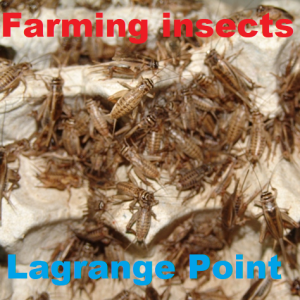
Monday Aug 19, 2019
Episode 340 - Insects revolutionizing agriculture
Monday Aug 19, 2019
Monday Aug 19, 2019
Insects are often thought of as the enemy of farmers, but they can help improve farming. From helpful worm pheromones, to farming crickets and hungry termites. Worms can help boost the resilience of crops like wheat, corn and maize to common threats. Worm pheromones help plants fight back against bacteria, viral and fungal invaders. If insects are the super food of the future, how do you successfully farm them on a large scale? What nutrient rich feed do insect farms need to give their herds? If you are growing crickets and locusts do they need different food? What food is best for termites and how can they be used to help better manage forest?
References:
- Daniel F. Klessig, Murli Manohar, Shine Baby, Aline Koch, Wiseborn B. Danquah, Emily Luna, Hee‐Jin Park, Judith M. Kolkman, B. Gillian Turgeon, Rebecca Nelson, Jan E. Leach, Valerie M. Williamson, Karl‐Heinz Kogel, Aardra Kachroo, Frank C. Schroeder. Nematode ascaroside enhances resistance in a broad spectrum of plant–pathogen systems. Journal of Phytopathology, 2019; 167 (5): 265 DOI: 10.1111/jph.12795
- P. Straub, C.M. Tanga, I. Osuga, W. Windisch, S. Subramanian. Experimental feeding studies with crickets and locusts on the use of feed mixtures composed of storable feed materials commonly used in livestock production. Animal Feed Science and Technology, 2019; 255: 114215 DOI: 10.1016/j.anifeedsci.2019.114215
- Martin F. Jurgensen, Chris A. Miller, Carl T. Trettin, Deborah S. Page-Dumroese. Bedding of Wetland Soil: Effects of Bed Height and Termite Activity on Wood Decomposition. Soil Science Society of America Journal, 2019; 0 (0): 0 DOI: 10.2136/sssaj2018.12.0492
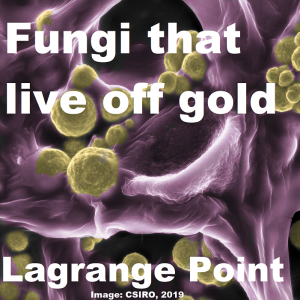
Monday Aug 12, 2019
Monday Aug 12, 2019
To celebrate National Science Week in Australia we are turning our attention to Australian research on the global scale. This week it means tales from microbiology. Stories of how life can survive or sometimes thrive in strange situations. Whether it be Fungi that eat gold, or bacteria chewing deadly gas, microbiology is always full of surprises. How do the tiniest parts of the food-web of our oceans hunt for food in the swirling of stagnant currents of the ocean? How do bacteria turn deadly gas into a food source? Is the secret to tuberculosis's resistance its ability to survive off deadly gas? How do bacteria turn carbon monoxide and hydrogen into something palatable?
References:
- Cordero, P. R., Bayly, K., Leung, P. M., Huang, C., Islam, Z. F., Schittenhelm, R. B., . . . Greening, C. (2019). Atmospheric carbon monoxide oxidation is a widespread mechanism supporting microbial survival. The ISME Journal. doi:10.1038/s41396-019-0479-8
- Islam, Z. F., Cordero, P. R., Feng, J., Chen, Y., Bay, S. K., Jirapanjawat, T., . . . Greening, C. (2018). Two Chloroflexi classes independently evolved the ability to persist on atmospheric hydrogen and carbon monoxide. The ISME Journal. doi:10.1101/457697
- Lehmann, E. (n.d.). Gold-coated fungi are the new gold diggers. Retrieved from https://www.csiro.au/en/News/News-releases/2019/Gold-coated-fungi-are-the-new-gold-diggers
- Bohu, T., Anand, R., Noble, R., Lintern, M., Kaksonen, A. H., Mei, Y., . . . Verrall, M. (2019). Evidence for fungi and gold redox interaction under Earth surface conditions. Nature Communications, 10(1). doi:10.1038/s41467-019-10006-5
- Holland, D., & University of Melbourne. (2019, August 05). The superheroes of nutrient detection living in our oceans. Retrieved from https://pursuit.unimelb.edu.au/articles/the-superheroes-of-nutrient-detection-living-in-our-oceans#
- Brumley, D. R., Carrara, F., Hein, A. M., Yawata, Y., Levin, S. A., & Stocker, R. (2019). Bacteria push the limits of chemotactic precision to navigate dynamic chemical gradients. Proceedings of the National Academy of Sciences, 116(22), 10792-10797. doi:10.1073/pnas.1816621116
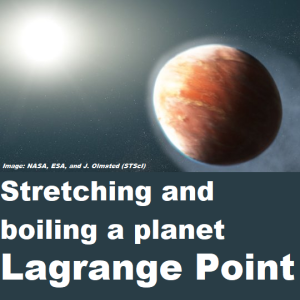
Monday Aug 05, 2019
Episode 338 - Exoplanets boiling and stretching, Goldilocks and Supernova
Monday Aug 05, 2019
Monday Aug 05, 2019
Boiling planets being stretched and squished. Tiny white dwarf stars going supernova. Goldilocks planets potentially with liquid water. Exoplanet hunting is now a lot easier with missions like TESS and veterans like Hubble. We look at some special cases, and how searching for 1 planet can uncover loads more. Sometimes planets are lurking in old observatory data, we just need to know where to look. Too hot, too cold, GJ357 potentially has a planet that's just right with liquid water. What causes a White Dwarf to go supernova? It needs more than itself to kickstart it into a Type 1a nova...so where does the extra boost come from? Devouring another planet? Or another star?
References:
- L. Kaltenegger, J. Madden, Z. Lin, S. Rugheimer, A. Segura, R. Luque, E. Palle, N. Espinoza. The Habitability of GJ 357 d Possible Climates and Observability. Astrophysical Journal Letters, 2019; (accepted) [link]
- R. Luque, E. Pallé, D. Kossakowski, S. Dreizler, J. Kemmer, N. Espinoza. Planetary system around the nearby M dwarf GJ 357 including a transiting, hot, Earth-sized planet optimal for atmospheric characterization. Astronomy & Astrophysics, 2019; DOI: 10.1051/0004-6361/201935801
- David K. Sing, Panayotis Lavvas, Gilda E. Ballester, Alain Lecavelier des Etangs, Mark S. Marley, Nikolay Nikolov, Lotfi Ben-Jaffel, Vincent Bourrier, Lars A. Buchhave, Drake L. Deming, David Ehrenreich, Thomas Mikal-Evans, Tiffany Kataria, Nikole K. Lewis, Mercedes López-Morales, Antonio García Muñoz, Gregory W. Henry, Jorge Sanz-Forcada, Jessica J. Spake, Hannah R. Wakeford. The Hubble Space Telescope PanCET Program: Exospheric Mg ii and Fe ii in the Near-ultraviolet Transmission Spectrum of WASP-121b Using Jitter Decorrelation. The Astronomical Journal, 2019; 158 (2): 91 DOI: 10.3847/1538-3881/ab2986
- P J Vallely, M Fausnaugh, S W Jha, M A Tucker, Y Eweis, B J Shappee, C S Kochanek, K Z Stanek, Ping Chen, Subo Dong, J L Prieto, T Sukhbold, Todd A Thompson, J Brimacombe, M D Stritzinger, T W-S Holoien, D A H Buckley, M Gromadzki, Subhash Bose. ASASSN-18tb: a most unusual Type Ia supernova observed by TESS and SALT. Monthly Notices of the Royal Astronomical Society, 2019; 487 (2): 2372 DOI: 10.1093/mnras/stz1445

